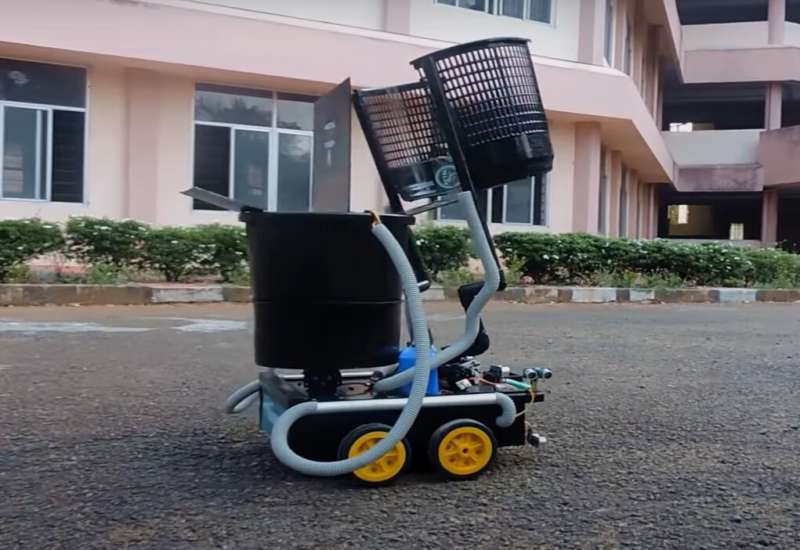New Yorkers friendlier than expected as robots take out the trash

A quick search of stereotypes of New Yorkers yields one characteristic that turns up most frequently: rudeness.
So it might come as a surprise that a recent study by Cornell University researchers found New Yorkers were, in fact, quite engaging, helpful and kind to two visitors at a busy spot in Greenwich Village last fall.
The visitors were two robotic trash cans.
Researchers Fanjun Bu and Ilan Mandel said they wanted to "study people's interactions with autonomous everyday objects."
"By studying interactions with robots in public spaces," they said, "we can better understand the range of behaviors and norms that robots will need to manage autonomously in longer-term deployments."
The report was presented at the Conference on Human-Robot Interaction in Stockholm last week, and was published as a Companion of the 2023 ACM/IEEE International Conference on Human-Robot Interaction.
Among their findings were that people welcomed the robots and were appreciative of their assistance. Some sought to "help" the robots by offering trash and moving obstacles from their path. Pedestrians even invested the robots with humanlike intentions, assuming, for instance, that wobbling motions were signals of appreciation, when in fact the motions were simply due to uneven pavement.
Notably, the design of the robots was not humanlike. They were constructed simply, with no face-like features, but simply a standard 32-gallon can on a hoverboard base containing a Raspberry Pi 4 mini computer and a 360-degree camera on top. Social interactions were thus based primarily on the robot's functionality, and not on any humanizing appearances.
On-site research assistants controlled the robots' movements.
The robotic trashcans encouraged social interaction, the researchers say.
"Strangers instigated conversations" about the potential roles of robots, they observed. One woman eating lunch at a table turned to another and said, "I guess it knows I've been sitting here long enough, I should give it something."
Bu and Mandel also reported that using more than one robot "change[d] the interaction paradigms at play." Some waved at the cans to come to them so they could dispose of waste.
But the appearance of a second robot led them to a new dynamic. People assumed the robots were aware of each other's existence. They also perceived competition between the cans, as one raced to a human immediately after the other can approached. This was another example of people assigning human characteristics, in this case goal-attainment, to the robots.
Some helped the cans straighten out when they were caught on uneven surfaces.
But, this being New York, not everyone was delighted. Some greeted the mobile garbage bins with, well, trash talk.
"That's creepy. That's just freaking creepy," one woman said, recoiling upon sighting an approaching can. Another chastised a recycling can for accepting non-recyclable trash. "Bad boy," he said.
Another person offered an impolite hand gesture that left no doubt he preferred to be left alone. And one other aggressively kicked the can over.
But humanity won in the end, and with it our hopes that one day humans and environmental endeavors such as mechanized wastebaskets may peacefully coexist as a video accompanying the report showed a little girl walking right up to one of the robots, blowing a kiss and waving goodbye.
More information: Fanjun Bu et al, Trash Barrel Robots in the City, Companion of the 2023 ACM/IEEE International Conference on Human-Robot Interaction (2023). DOI: 10.1145/3568294.3580206
© 2023 Science X Network
 Robots can help improve mental well-being at work—as long as they look right
Robots can help improve mental well-being at work—as long as they look right
No comments:
Post a Comment